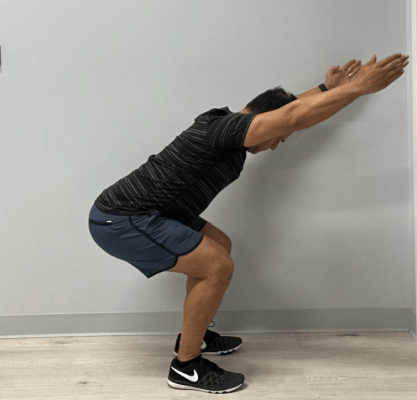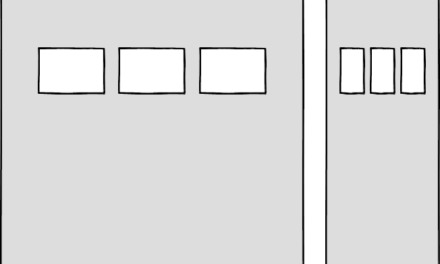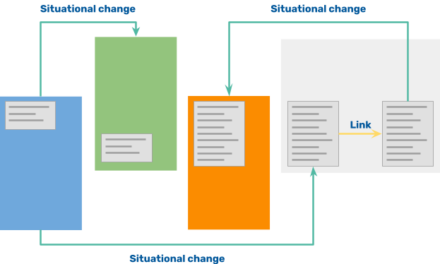Here comes the sun and new sweaters).
If you have a goal to tone and sculpt your legs, squats and lunges may come top of mind for your gym routine. However, it can be tricky to know which to opt for to get the best results—let alone how to do each with the right form.
“Both squats and lunges are recommended for a well-rounded sculpted lower body,” says certified personal trainer Nico Gonzalez, CPT, global movement trainer and educator for Balanced Body.
Here’s everything you need to know about a lunge vs. squat, how to do each, their pros and cons, and which one you should opt for based on your goals.
Squats
When you think about it, squats aren’t just for sculpted legs (though they can certainly help with that!). They’re an essential part of functioning in everyday life.
“We squat every day of our lives, so it’s important to keep those muscles and joints working for as long as possible,” Gonzalez says. “We all need to squat—whether it be with hand weights, a bar, or just our body weight.”
Practicing squats can tone your legs while also improving your overall balance and mobility.
How to do it
Here’s how to properly perform a squat, according to Gonzalez.
- Stand with your feet shoulder-width apart, shoulders back, your toes slightly turned out, and your arms at your side.
- Bend your knees as you push your hips back and shift your weight onto your heels as you squat down.
- Keep your chest up and your core tight. Lift your arms straight overhead as you squat down, so your biceps are by your ears.
- Squat down until your knees are parallel to the ground—or stop before that if you have pain or can’t maintain proper form.
- Squeeze your glutes and push through your heels to straighten your legs and return to a standing position.
“Work toward a neutral spine, where your back is neither rounded or arched,” Gonzalez says.
If you’re a beginner, you should start with just body weight, but you can add weights to progress over time. The weights should always be light enough that you can maintain proper form.
Complete three sets of 15 to 20 reps each, two times per week.
Muscles worked
Squats are great for sculpted legs, but they also strengthen your core while helping you maintain stability and balance.
The squat works the following muscles:
- All three gluteal muscles (gluteus minimus, gluteus medius, and gluteus maximus)
- Quadriceps (knee extensors)
- Hamstrings (knee flexors)
- Erectors (in the back)
- Gastrocnemius (the calves)
- Core muscles (stabilizers)
It may come as a surprise that squats target your core. This exercise is great for activating a number of core muscles—not just your abs.
“When you bend from your hips and hinge your body forward, the deep lower back muscles called the multifidi fire up,” Gonzalez says. “Additionally, the pelvic floor muscles react during the squat in a positive, healthy way.”
Pros
A squat allows you to use heavier loads as you stand on two legs. It also provides more balance and stability than a lunge, says Jahkeen Washington, CPT, owner of Harlem Kettlebell Club.
“If your goal is to move much heavier weight and build max strength, I would prioritize the squat over the lunge,” Washington says.
A natural functional movement, the squat movement mirrors movements you make daily when sitting, getting up from the toilet, and so forth.
Squats also work several parts of your body at once, called a compound exercise.
“A squat takes multiple muscles to execute, which may increase your heart rate and burn more calories during a workout,” Gonzalez says.
Cons
It’s important to follow the steps above to properly perform a squat, because they are often done with poor form (mistakes include rounding your back and collapsing your knees inward), which can lead to injury.
This is especially important as you continue to add weight to your squat workout, which is key for building muscle over time.
“Although you can use your own body weight for squats, progressions need additional weight,” Gonzalez says. “Bodyweight squats are amazing all by themselves, but if you want to sculpt legs, then adding resistance is a must.”
Plus, you’ll need to incorporate more variety than just squats into your routine to keep your muscles balanced.
“One cannot live on squats alone—repetitive squats without a well-rounded workout routine will lead to muscle imbalances,” Gonzalez says. “Incorporate lateral lower-body movements such as side steps with a circle band and inner thigh work to balance it all out.”
“We squat every day of our lives, so it’s important to keep those muscles and joints working for as long as possible.” —Nico Gonzalez, CPT
Lunges
Lunges build lower-body strength and sculpt your legs, both through bodyweight training alone and when you add resistance like weights.
“They also enhance the balance of the lower body,” Gonzalez says. “That balance is challenged through lunges because we use one leg at a time, either in front or behind the body.”
Because of that, lunges are a great exercise to improve your overall balance and stability.
How to do it
Here’s how to properly perform a lunge, according to Gonzalez.
- Start standing with your feet hip-width apart, arms folded in front of your chest.
- Step your left leg forward, bending both your front and back legs to a 90 degree angle.
- Keeping your chest tall, bend both knees and drop toward the floor with control. Keep lowering until your back knee is about an inch off the ground (or as low as you can comfortably go).
- Push through your left foot to bring yourself back to the starting position.
- Repeat until all reps are completed on one side or alternate your reps, stepping forward with your right leg next.
“The back leg knee should be bent right under your hips and your front leg knee should also be bent—ideally both at 90 degrees,” Gonzalez says. “The back heel should be lifted.”
As with squats, beginners should start with just body weight, but you can add weights to progress over time. However, the weights should be light enough that you can maintain proper form.
Complete three sets of 15 to 20 reps each, two times per week.
Muscles worked
The muscles worked in a lunge are similar to those worked in a squat, including the core. However, lunges may target the erector muscles in the back somewhat less.
When you perform a lunge, the key muscles it works include:
- Glutes
- Quadriceps
- Hamstring muscles
- Gastrocnemius
- Core muscles
Pros
Lunges allow you to strengthen both sides of your body individually, which is helpful if you’re an athlete who spends more time on one leg, Washington says. You can work to decrease any noticeable imbalances between the two sides—all while increasing your balance and stability.
“If you want to gain strength while also training other qualities like balance, coordination, and stability, the lunge will be a better option over the squat,” Washington says.
Similar to squats, lunges can also help you perform everyday activities with more ease.
“Lunges are a functional exercise that improves walking, running, hiking, and climbing stairs,” Gonzalez says.
You can also try variations like walking lunges and lateral lunges to add variety to your workout routine and target different muscles.
Cons
If balance is a challenge for you, lunges may be as well.
“You might want to hold onto something as you learn how to properly lunge without falling—and eventually progress to no assistance,” Gonzalez says.
If you have certain underlying conditions or injuries, you may also want to avoid lunges.
“Lunges can put too much pressure on knees and ankles, depending on the injuries and limitations of clients,” Gonzalez says.
Although you may be able to make the movements smaller to adjust, it’s always best to speak to your doctor or a certified trainer if you experience pain or have concerns.
“If you want to gain strength while also training other qualities like balance, coordination, and stability, the lunge will be a better option over the squat.” —Jahkeen Washington, CPT
The bottom line
Both squats and lunges can help you tone your legs. “If you want sculpted legs, I recommend using both to reap the most benefits,” Washington says.
That said, squats may be a better option if you struggle with balance—or want to avoid putting too much pressure on a single joint, like your knee.
In either case, strategize how you’ll increase your load over time to build strength.
“Whether you prefer squats or lunges, or use both, the best way to build sculpted legs is through progressive overload,” Washington says.
If you have questions about safely adding weights to your squats or lunges, or identifying which is best for you, speak to a certified trainer who can guide you.
Recommended Story For You :

The alpine secret for healthy weight loss

The Most Potent Fast-Acting Formula For Incinerating Stubborn Fat

Real Cortexi Users Real Life‑Changing Results

This Cold Drink Might Trigger Your Prostate

Red Boost is a powerful new formula for boosting male sexual health.

Everything you eat or drink eventually reaches your liver for processing.

Brand New Probiotics Specially Designed For The Health Of Your Teeth And Gums

Empowering You to Take Control of Your Blood Sugar Health!

Scientists Finally Discover the Root Cause of Belly Fat and Unexplained Weight Gain






